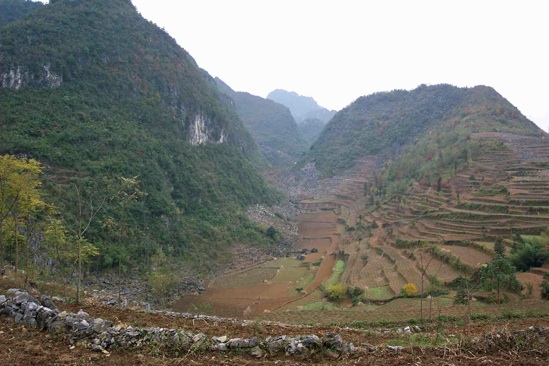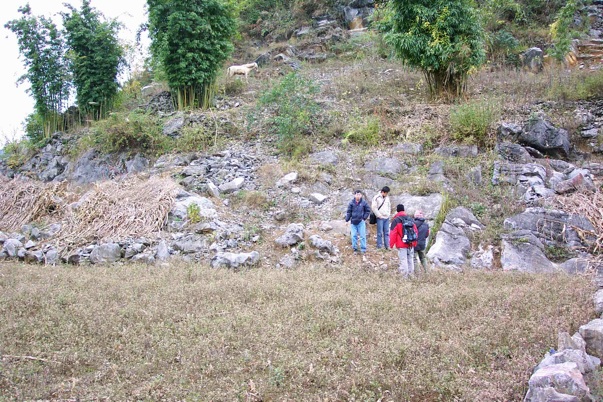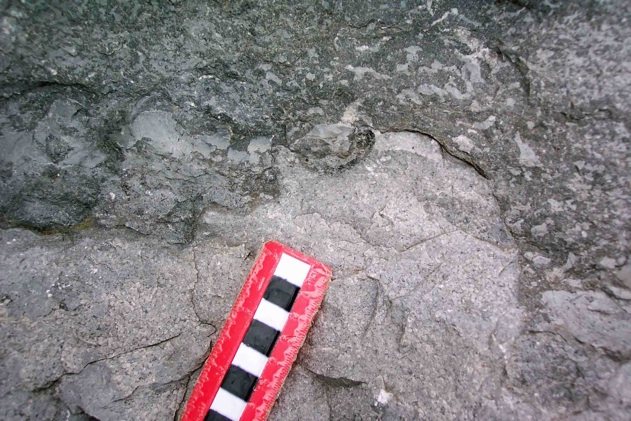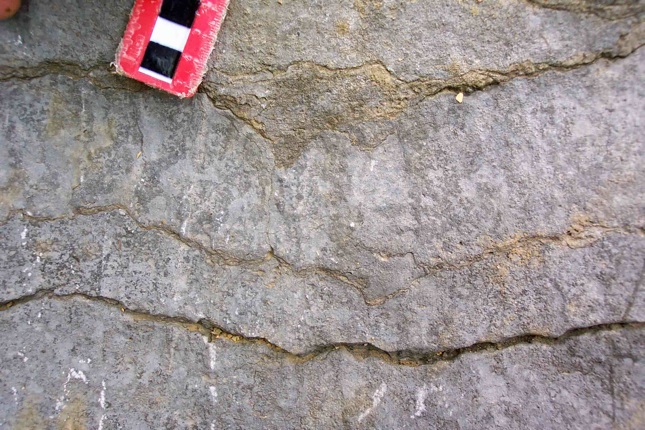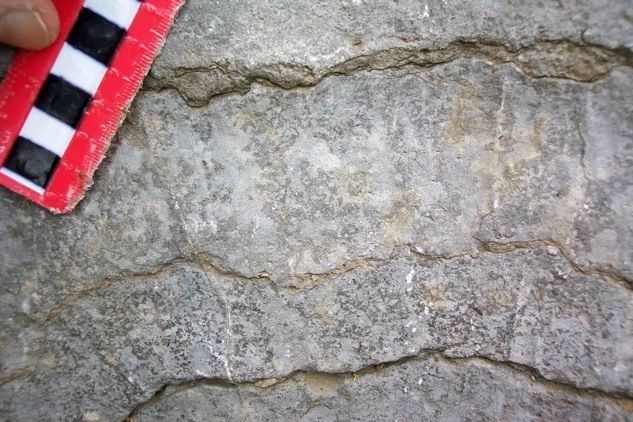LANGBAI site, Great Bank of Guizhou; PTB microbialite
This page authored by Steve Kershaw
This area was made famous by the work of Dan Lehrmann and colleagues. Below are some photos of the Langbai site on the Great Bank of Guizhou, where PTB microbialite encrusts an irregular erosion surface. There is great interest in this surface because some authors consider it as a submarine dissolution surface caused by ocean acidification associated with the end-Permian extinction event. Others drew attention to the presence of vadose fabrics in the foraminiferal grainstone (light-coloured area below the erosion surface).





